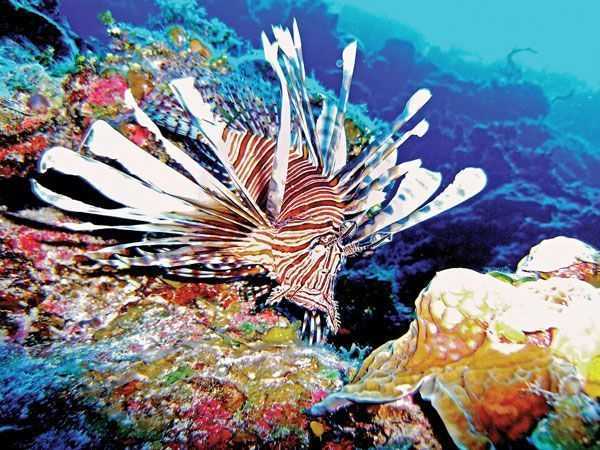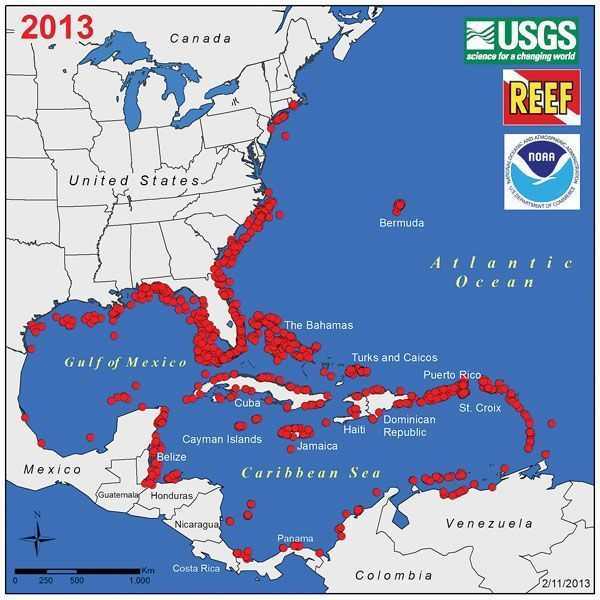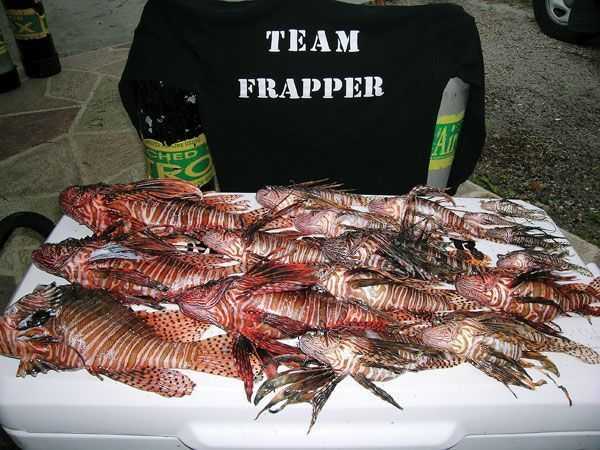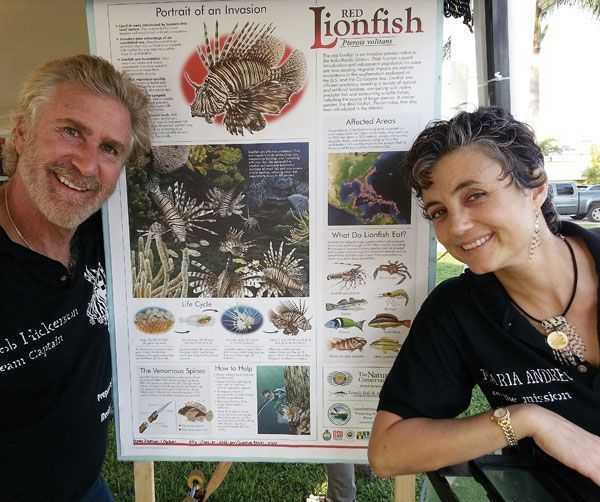By Bob Hickerson
First reported sightings of a lionfish in Florida waters date back to 1985. Reports slowly increased over the years and eventually resulted in an explosion of sightings around 2009. This is not solely a Florida event but one of international proportions. The affected areas now range from the northern coastline of South America, throughout the entire Caribbean, Central America, Gulf of Mexico and eastern seaboard of the U.S. This is the first time a non-indigenous marine species has been able to effectively establish itself outside of its native range. When fielding questions during our lionfish events, many of the same ones keep popping up. There remains a great deal of mis-information out there! The answers expressed in this article are brief and not intended to be of a scientific nature; but rather targeted to fishermen, divers, recreational boaters and outdoor enthusiasts that may be just becoming aware of this problem.
Why are Lionfish such a big problem?
Lionfish are consuming native juveniles, small reef fish and crustaceans at an unsustainable rate. Think grouper, snapper, lobster, crab and shrimp to name just a few. They are out-competing our already stressed native species. They consume important reef-grazers and algae eaters as well, which will eventually lead to a decline in the health of our marine ecosystems. Adult females are capable of releasing 20,000 to 30,000 eggs every four days. Once fertilized, the buoyant egg masses are dispersed by the prevailing ocean currents. Larvae settle into their new home after a month-long journey. They prefer to live around structure of any kind and have been seen in depths from 2 feet to 1,000 feet and temperatures of 50 to 90 degrees.
How did they get here?
These lionfish are offspring or descendants of those native to the Indo-Pacific region. The consensus among researchers is that a series of intentional, well-meaning, aquarium releases over decades led to this problem. De-bunked theories initially presented include: Hurricane Andrew, ship ballast releases and Atlantis Resort, located in Nassau, Bahamas. We heard that they were poisonous
Though not poisonous, they do have up to 18 venomous spines which pack quite a nasty toxin should a spine puncture your skin. The spines are located on their dorsal, ventral and anal fins. The spines are super-sharp and solid, not hollow. The spines are used defensively only. De-bunked: The venom is not present in the meat. There are no venom sacs at the base of the spine.
Can you die from a sting?
There have been no deaths reported to date. Reactions however, can vary greatly. Typically, instant pain is associated with the slightest envenomating puncture, followed by throbbing pain and swelling. With multiple punctures comes a greater need for immediate medical treatment in the form of pain management and infection avoidance. Symptoms can last from hours to days or more. First aid advice is to apply heat to the wound as soon as possible by immersion in hot, non-scalding liquid of approximately 110 to113 degrees. Check water temperature on a non-affected area first then immerse cleaned wound for as long as needed. We have reports from researchers working with thawed, months-long frozen fish still capable of producing envenomations. De-bunked: Soaking the wound in ice or iced-salt water may seem to provide some short-term relief but will do nothing to denature the venom as heat will.
Once the fish is caught or captured, how do I handle it safely?
Avoiding the spines, euthanize the fish by placing it in icy water. Once dead, trim the spines close to the body with a good pair of shears or scissors. Dispose of the trimmed spines safely and appropriately.
Can they be caught using hook and line?
Only a handful of reports have come in so far. This may become a more common occurrence as their population continues to increase on our deeper reefs. They prefer live fish or crustaceans and can take in prey up to one half their own body size
How big do they get?
While diving in 100 feet of water or less, we are now removing them in the 16 inch – 2 pound-plus range. Reports have come in of those pushing 19 inch – 3 pound-plus range.
Are they good to eat?
Absolutely! I can tell you that we have been eating those locally caught for four years now and consider it one of our favorite fish. The meat is white, flaky, sweet and mild. It has been compared to hogfish, flounder and snapper. Prepare it as you would any other mild fish. Once the spines are removed, clean and fillet as you would any other!
Are restaurants or seafood distributors starting to carry them?
Finally, yes! Ask for lionfish at your favorite seafood restaurant!
If caught, sighted or removed, who should I report this to?
The U.S. Geological Survey maintains a data base on all non-indigenous species. Their website is: http://nas.er.usgs.gov/SightingReport.aspx
How can you help?
Long term —report captures, support local removal efforts, encourage local restaurants and seafood dealers to carry it and, this one may not be too popular with my brother fishermen and women but, since large grouper and snapper seem to have shown an interest in consuming lionfish, it may be best to give them a bit of a break for a while and not always go for the limit. We just may need their help if we ever hope to control this invasion. Short Term—find out about, and participate in Lionfish Derbies and Tournaments, Round-Ups and Safaris.
Bob and his wife Maria conduct public awareness talks entitled “Lionfish: A Perfect Invader?” to fishing clubs, environmental and conservation groups as well as attend outdoor environmental events with their Lionfish education booth. They have formed a group of volunteer SCUBA divers called TEAM FRAPPER that routinely clear lionfish from waters throughout Florida and attend nearly every Lionfish “Derby” or “Safari” held in the state.
[easy-social-share]



